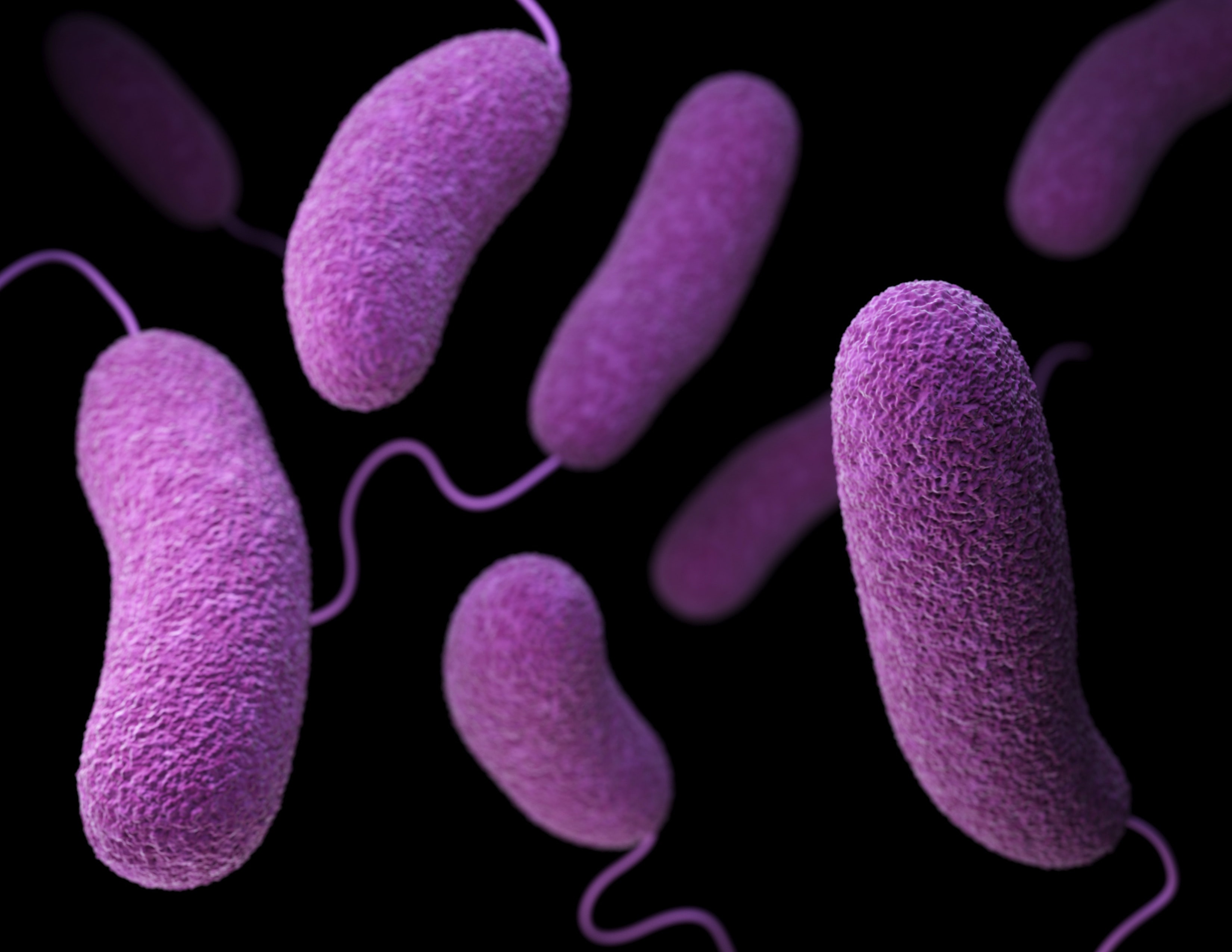Sometimes we blame stomachaches or pains on stress. Other times, we think we have some kind of intolerance that leads to indigestion, heartburn, or reflux. What if the common denominator was bacteria?
The Helicobacter pylori (H.pylori) is a type of gastric bacteria that affects more than half of the world’s population. In some cases, it’s important to rule out their presence, because if they are present, treatment is needed, as chronic infection may lead to the development of gastric cancer.
Dr. Celia Gonzalo Gleyzes – Neolife Medical Team
Characteristics of Helicobacter pylori
This is a gram-negative, microaerophile bacteria (it needs very little oxygen to survive), it has an elongated shape, and it has 4-6 flagella in one of its extremities. Its habitat is the stomach.
Its ability to adapt to this inhospitable acidic environment (low pH) is remarkable. First, it crosses the protective wall of gastric mucus with its flagella and once attached to the gastric wall, it sets into motion its enzymatic activity of urease (chemical transformation process). It then converts urea into ammonium and carbon dioxide (this in turn will become bicarbonate). The ammonium neutralizes the acidity of the stomach and also causes damage to the cells, leading to an inflammatory state.

H.pylori can make use of the iron found in epithelial cells (cells that line the stomach). When the individual has adequate acid secretion, the bacteria proliferate in the gastric antrum, but if they don’t (for example, in cases of atrophic gastritis, vagotomy, or when taking medications), the bacteria will migrate to the proximal stomach and may cause pangastritis (inflammation of the entire stomach).
The transmission of the bacteria is easy, oral-oral or fecal-oral, so it is common for several members of the same family to be infected.
What can cause H.pylori infection?
The clinical symptoms for this type of infection is highly variable. Peptic ulcer is one of its manifestations and patients may experience symptoms such as abdominal pain, nausea, vomiting, and early satiety. Elderly individuals may even remain asymptomatic. Complications of the ulcer include bleeding, gastric obstruction, and perforation. The recommendation is the eradication of H.pylori before starting anti-inflammatory treatment (NSAIDs).
The American College of Gastroenterology (ACG) defines dyspepsia as pain or discomfort in the epigastrium during a period of over a month. This would indicate the need for testing to rule out H.pylori infection. If the infection continues, the patient will reach a state of chronic gastritis.
H.pylori is strongly related to gastric cancer and thought to be responsible for 80% of the cases. On the other hand, it is also associated with the onset of MALT lymphoma (lymphoma of lymphoid tissue associated with mucous membranes). The most common form of lymphoma is the extraganglionar non-Hodgkin’s lymphoma.
In conclusion, it is worth noting that recent studies have associated idiopathic thrombocytopenic purpura (ITP) and iron deficiency anemia with H.pylori infection.
Diagnosis: how and when?
The main indications for performing an H.pylori diagnostic test, according to the ACG, are:
- The presence of an active peptic ulcer
- A history of peptic ulcer
- Low-grade MALT lymphoma
- A history of endoscopic resection of early gastric cancer
Patients without alarming signs, under 60 years of age, who have dyspepsia are also candidates for diagnostic tests, if any. Individuals with alarming signs and/or who are over 60 years of age require a more invasive initial test, i.e. an endoscopy with gastric biopsies.
Other special situations (individuals with unclarified anemias with iron deficiency, ITP, term treatment with acetylsalicylic acid (AAS), or in the step previous to the initiation of treatment with NSAIDs) will also benefit from diagnostic tests.
Noninvasive tests include the simple urease test (breath test) and the detection of H.pylori antigens in stools. Both tests are valid, but in geographic locations of low prevalence, after the stool test, it’s advisable to confirm this with the urease test.
Your doctor will give prior indications (interruption of certain drugs) so as not to produce “false” test results.
Treatment
One the diagnosis has been confirmed, it is time to take action, and it will not always be easy (poorly tolerated drugs, treatment that may take 14 days, etc.).
The professional will select a combination of various drugs (proton pump inhibitors, such as omeprazole, and two to three concomitant antibiotics), assessing allergies, intolerances, interactions, and antibiotic resistance.
Once the treatment is completed, a test will need to be carried out after 4-6 weeks to confirm the eradication of the bacteria, and if this is not the case, a new treatment will be proposed to the patient.
In over 20% of the patients, the initial treatment does not eliminate the bacteria; this may be due to poor therapeutic compliance, antibiotic resistance or individual factors (smoking, diabetes mellitus, and genetic variants of liver enzymes).
Some curious facts
It appears that the bacteria found in Kimchi (fermented Korean vegetables) and green tea may protect against H.pylori.
Yes, it is possible to become reinfected. If the symptoms appear once again, it is advisable to run the diagnostic tests again.
Without treatment, the bacteria persists for the duration of a person’s life; the immune system does not eliminate it. Some individuals will unfortunately develop symptoms and disease and others will not.
BIBLIOGRAPHY
(1) Helicobacter pylori: A Review of Current Diagnostic and Management Strategies.
